
Rohit Dey, Architect – Drone Solutions, Mistral Solutions Pvt. Ltd.
Drones, also known as Unmanned Aerial Vehicles (UAVs), Miniature Pilotless Aircrafts, or Flying Mini Robots, are fast gaining popularity and have become the weapon of choice in modern warfare, used by both state and non-state organisations. Drones are becoming increasingly indispensable, considering their high level of efficacy, low cost, and low visibility. Drones are still in their infancy in terms of mainstream adoption and usage, but they have already broken-down traditional boundaries in industries that were previously thought impenetrable by similar technical advancements. Drones have become crucial to the functioning of numerous enterprises and governmental organisations over the last few years, piercing through sectors where specific industries such as industrial, defense, oil and gas, search and rescue etc., were either stagnant or lagging behind.
Drones have been around for more than couple of decades, however, their origin can be traced back to World War I, when the United States and France collaborated to develop autonomous, unmanned warplanes. Drone technology has evolved and thrived in recent years, from technically staffing critical military regions to enticing enthusiasts all over the world. The last decade has been noteworthy in terms of drone acceptance, industry utilisation, development, and worldwide awareness.
Types of Drones and Their Applications
Typically, Drones are categorised into three major platforms – Fixed wing, Rotary wing, Hybrid VTOLs (Combination of fixed and rotary wing Vertical Take-off Landing). Further, they are also classified based on their Size (nano, micro, small, medium & large), weight, flying characteristics, type of energy source etc. Fixed wing UAV platforms, which are already operational in leading defense forces worldwide, are used for long range missions due to their characteristics like high speed, fuel consumption, flying altitude, and far greater payload capabilities. Fixed wing UAVs require moderate to larger space to take-off and land as they are launched either by hand, catapults or airstrips depending on the wingspan of the aircraft. Rotary wing UAVs, commonly known as Helicopter or Rotorcrafts, can be classified in to sub categories such as Single rotor (similar to conventional helicopters with main rotor and tail rotor), Multirotor (more than one rotor – bi, tri, quad, hexa, octa etc.) & hybrid platforms. Rotor UAVs, due to their unique ability to take off & land vertically from very limited and compact space, is finding increased applications in homeland security and military applications. The ability of these drones to hover for long duration make them ideal for search and rescue operations, small-cargo delivery, ISR, and border surveys, among others. VTOL is a very unique platform with massive capabilities and extensive operationality for Defense applications. This platform can take off and land like helicopters, hover and also fly around in Heli-mode, and can also be switched to fixed wing and fly like an airplane with speeds higher than helicopters.
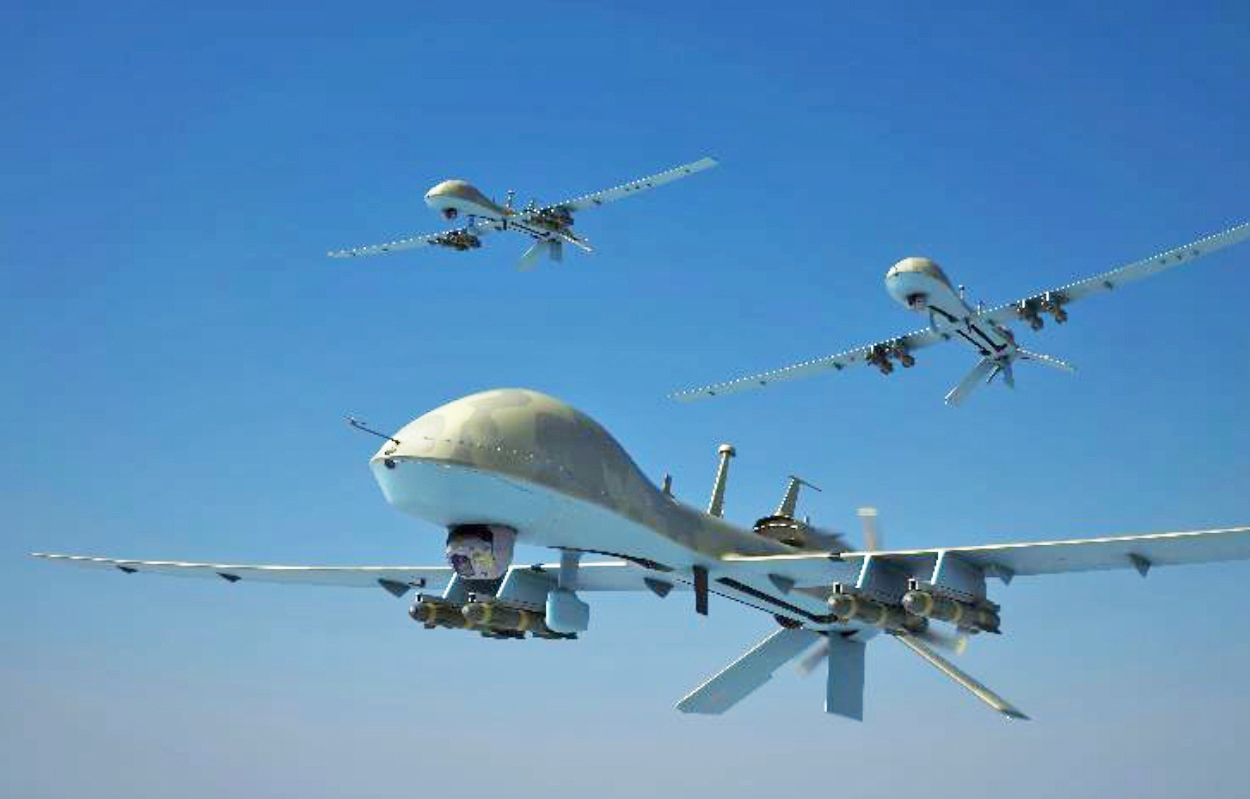
Drones have proved to be incredibly advantageous in locations where humans cannot access or function in a fast and effective manner, be it making rapid deliveries during rush hour or rushing supplies to an unreachable military post. Increased efficiency and productivity, reduced workload and production costs, enhanced accuracy and minimal security challenges are just a few of the many benefits drones provide organisations throughout the world. Drone technology adoption across sectors jumped from the fad stage to the standard operational stage very fast, as more and more firms realised their potential, scope, and applications. Drones, whether operated by a remote or a smartphone app, have the capacity to reach the most remote regions with the least amount of effort, time, and energy. This is one of the primary reasons that they are being accepted globally, particularly by sectors like: military, commercial, personal, cinema, agriculture, police, government, AI based applications.
Some of the Drone applications include:
- Long distance ISR.
- Law enforcement and border surveillance.
- Self-destructing target systems.
- Short range armed drones for combat.
- Swarm operations for both military and entertainment applications.
- Network connectivity system.
- Emergency/ disaster management.
- Search and rescue operations.
- Rapid fire fighting aerial system.
- Express shipping and delivery.
- Perimeter surveillance and safety inspections.
- Geographic survey and mapping of inaccessible terrain and locations.
- Precision crop monitoring.
- Storm tracking and forecasting hurricanes and tornadoes.
Drones in Defence Ecosystem
Today, Drones have become an integral element of armed forces across the world, serving as target decoys, combat operations, research and development among others. Military spending, according to recent projections, will continue to be the primary growth driver for drones in the coming years. According to these projections, worldwide military spending on drones is expected to cross $70+ billion in 2022, and these drones will play a critical role in resolving future wars replacing human pilots. Military funds also tend to come in bigger amounts, with a single US Predator drone costing around $4 million, and overall programme spending estimated at nearly $2.4 billion.
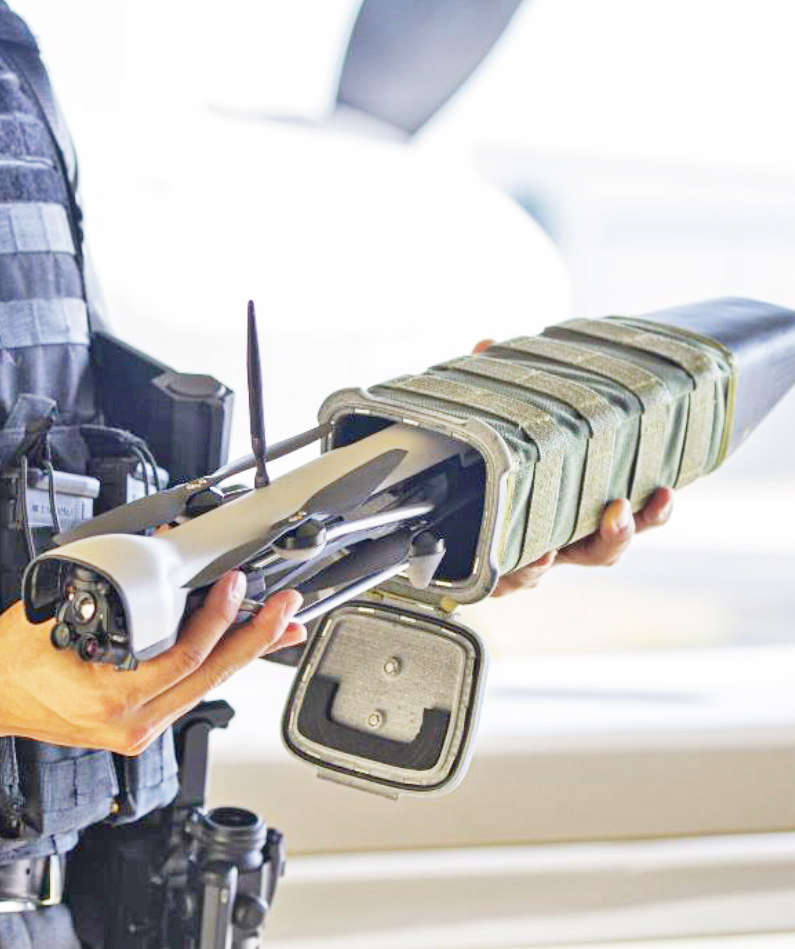
Defense forces have been using fixed wing UAVs for a few decades to conduct unmanned aerial surveillance and launch strikes in addition to using them as electronic decoys and Radar jammers. Fixed wing UAVs have their own advantages, however, rotary wing UAVs, due to the unique capabilities are considered the future of warfare. Lately, defense forces have been considering rugged special purpose tactical drones for military research, intelligence gathering at borders and to carry out combat missions beyond enemy lines. The Indian army, in the recent past, has taken various initiatives to strengthen the high-altitude border areas using drones of various capacities and capabilities. The Army is considering the induction of a wide range of Drones with varying capabilities for applications such as high-altitude heavy payload delivery, continuous border surveillance, combat and cross-border ISR among others.
Heavy Payload Drones
The northern and eastern borders of our country is extremely hostile and harsh with altitude ranging from 5000 to 20000 Ft, heavy snow fall during winter, presence of glaciers and treacherous mountain ranges. The most critical challenge which the Indian Army faces at these heights is the transportation of essential goods like fuel, food, medical kits & ammunition from Base depots to the forward posts. In many situations, the transport of a 50KG cargo may take a full day. This issue is compounded further during hostile situations. Such delays in transportation of essential goods may result in loss of lives at the forward posts. Currently, Indian Army is managing this daily logistics using human-guided mules, whereas urgent heavy load items are transported using helicopters. The daily mule-based transportation, due to harsh terrain and bad weather conditions, on an average takes 8-10hrs for a standard delivery and also involves high risk to human and animal lives. The method can also cause severe losses during a conflict due to the delayed delivery of ammunition and critical supplies.
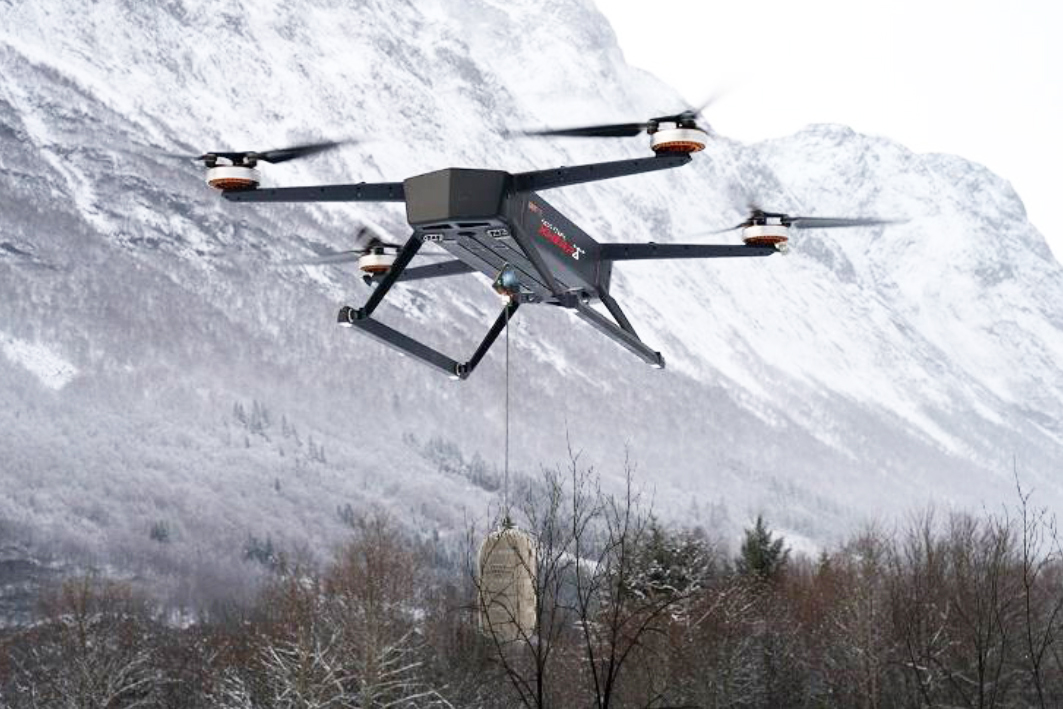
The requirement of a heavy lifting drone for logistic delivery in high altitude areas is a problem specific ‘only’ to India and its border security needs. Such an application has not seen any requirements in any other parts of the world and hence no R&D efforts have been made in this area. There is also no drone flight or performance data available for such requirements.
The Heavy Payload Logistics Drone System’s operational objective is to conduct the payload delivery in a completely automated manner, which eliminates the need of manpower in transporting goods across harsh high-altitude terrain. The Drone will help in quick payload delivery and in much more effective way than the conventional mule transport system currently used by Indian Army. The Drone will be able to perform autonomous missions starting from take-off at the desired pick-up location with the payload and autonomously navigate itself to the delivery location and land for payload drop-off.
Stealth Drones
Drones are used by military, special forces and border security forces for ISTAR and several tactical operations worldwide. The increasing threat from Drones have resulted in the development of several drone detection and neutralising technologies in recent times. Stealth means sneakiness. When you do something with stealth, you do it so quietly and carefully that no one notices. Nano & Micro Drones are advanced innovative devices that pack a lot of capabilities into a small package, and are quickly becoming a vital military asset.
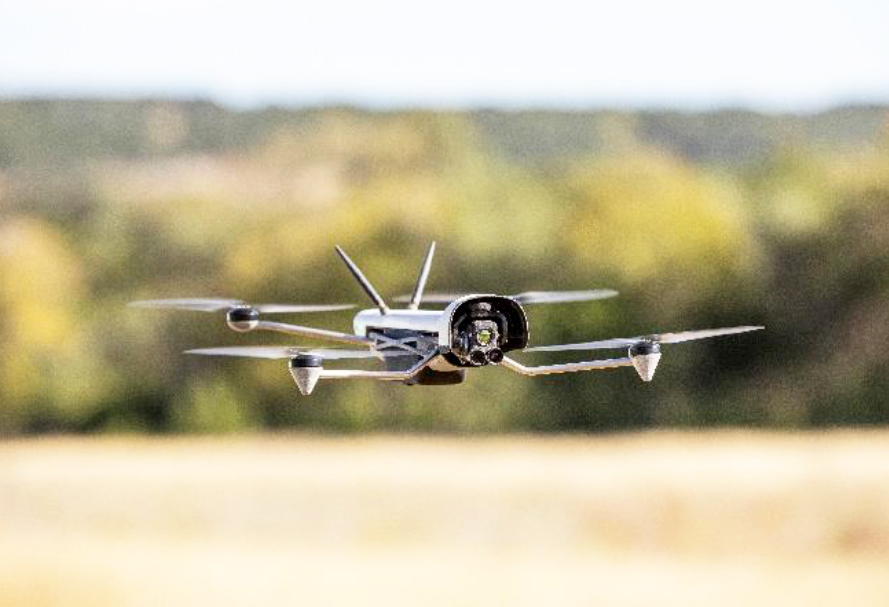
Stealth drones are the next big thing in the aerospace and defence industry. These ultra-compact drones, as light and undetectable as wind, offers unprecedented aerial surveillance capabilities and situational awareness in all weather conditions. Stealth drones are capable of evading Radars and prevent human detection. With advanced technologies that reduce reflection and emission of Infrared, visible light, radio frequency spectrum, and audio waves, these ultra-compact aerial reconnaissance systems give field operators trusted eyes in the sky in any conditions. These drones are very compact and have the unique capability of flying very close to the identified targets without detection. They are also designed to fly indoors giving mission critical information to the operator. Stealth Drones are about few centimetre & grams in dimensions and weight, equipped with both day & night cameras. The flying time is generally around 25 to 40 mins with range of operations close to 5km.
Armed Drones
Talking further into the use of Drones in defence and offence, short range aerial combat systems are something we will see coming into power. These types of UAVs/ Drones can be of multi-rotor and VTOL platform depending on the kind of operational use case. They would prove to be immensely effective for ISTAR (intelligence, surveillance, target acquisition and reconnaissance) and will be widely used by defence forces worldwide. Armed combat drone is still an emerging trend, and many countries are exploring its potential due to benefits like quick launch of time-sensitive missions and reduced risk to lives of pilots or soldiers. These Aerial Armed systems will be a force multiplier in small arms conflict and extends the troops’ lethal range by up to seven times.
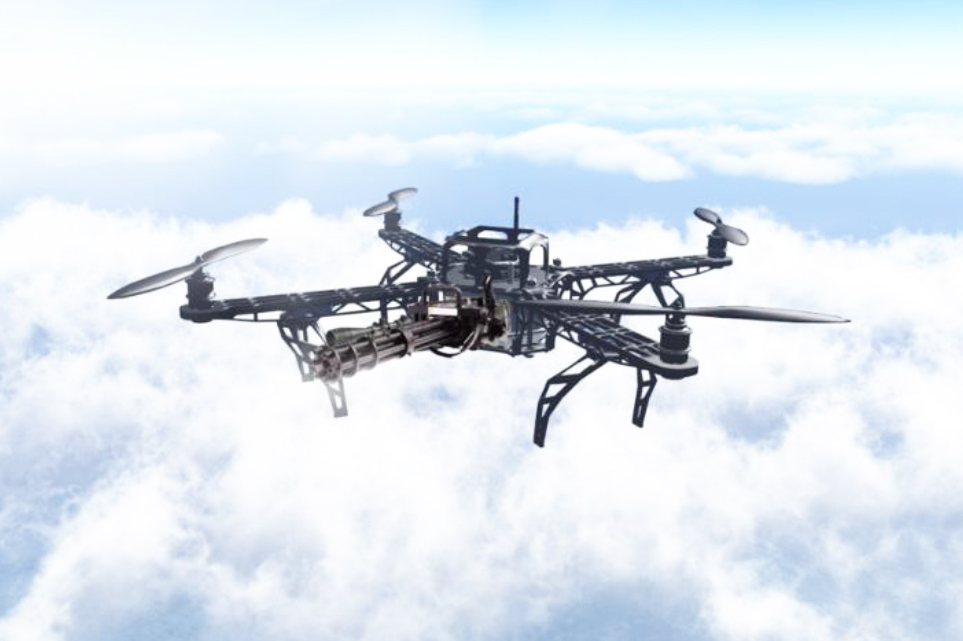
Mine Detection and Detonation Drones
Landmines are a potential threat to life – both army personnel and civilians. Land mines, mostly, are traced and detonated manually by trained deminers and defense personnel. This method is not only expensive and time consuming, but also highly dangerous. Drone based Mine Detection and Detonation is a recent technology evolution, which can greatly facilitate and enable deminers and Defense forces in their effort to maintain safety and security of people. Drones, integrated with futuristic detection sensors, can detect landmines in a defined area and detonate them in a fully automated manner. This method is efficient and ensures safety of the deminers.
The Mine Detection Drones, currently available in market, are integrated with various sensors like magnetometer, metal detector, explosive detector, and ground-penetrating radar among others, to survey a defined large area and locate and pinpoint potential presence of landmines on a map. Mine Detection Drones use vision analytics and various data fusion algorithms to analyse and obtain precise location information. Once the mines are located and pin-pointed on the map, based on the situation, they are either detonated by dropping thermite sticks/ timed demining explosives, or disarmed manually. Drone based Mine Detection and detonation is expected to be 10 times faster and 40 times cheaper than conventional manual methods.
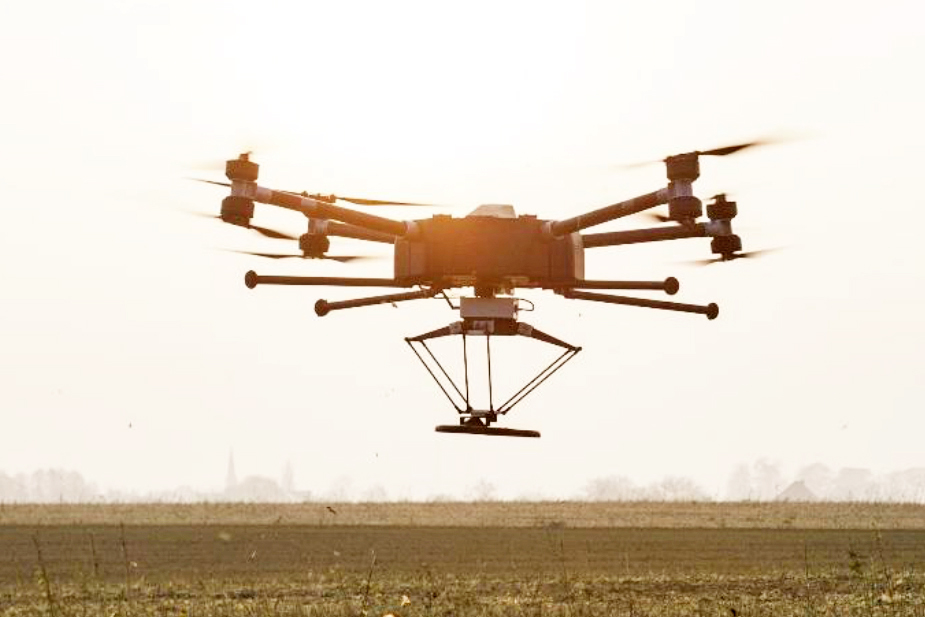
Tethered Drone Systems
While multi-Rotor drones are finding tremendous applications in defense applications, one limiting factor is the endurance lasting not more than 60 minutes. Tethered Drone Systems, which have been in use for over a decade or two, are a great way to augment drone based military applications, especially continuous surveillance of a defined area or a sensitive border post. Tethered drones come with an unbreakable power and communication link with the ground station, over a spool of wire. The length of the wire can vary from 100 to a few hundred meters, based on the user requirements and applications.
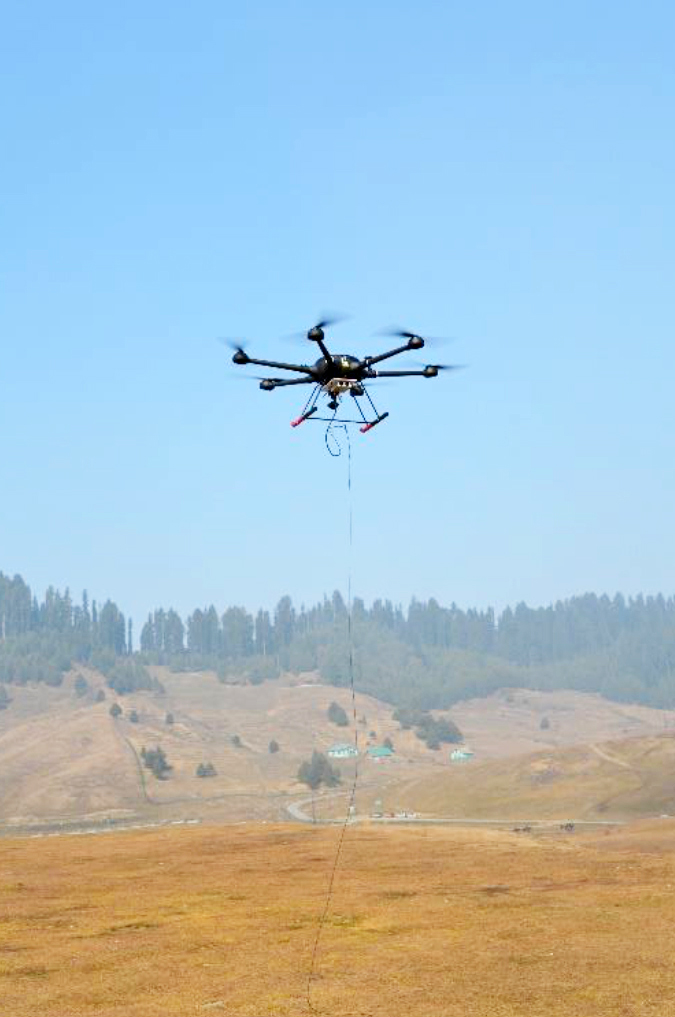
In Tethered Drone Systems, the ground station is usually connected to raw power or a generator to ensure continuous power supply to the drone and its payloads. Industry-leading tethered systems are integrated with smart power management and automatic tether winding mechanism to ensure continuous operation for hours. These systems use global navigation satellite system (GNSS), to maintain the flying ceiling and position of the drone even in harsh weather conditions. One of the key advantages of these systems is the safety and real-time high-resolution data it transfers to the users. Tethered Drones Systems are ideal for continuous border surveillance, perimeter surveillance, monitoring of military forward posts, and to establish quick communication networks at mountainous areas as they can stay airborne for more than 10 hours.
How AI is Transforming Drones?
Drone technologies are evolving faster than ever as modern-day technologies like artificial intelligence and deep learning are increasingly finding their way into drones. Computer based platforms allow significant automation and scalability in information processing. AI, on the other hand, raises the degree of computing to a far higher level enabling intelligent decision-making, solution finding and parameter optimization more accurately.
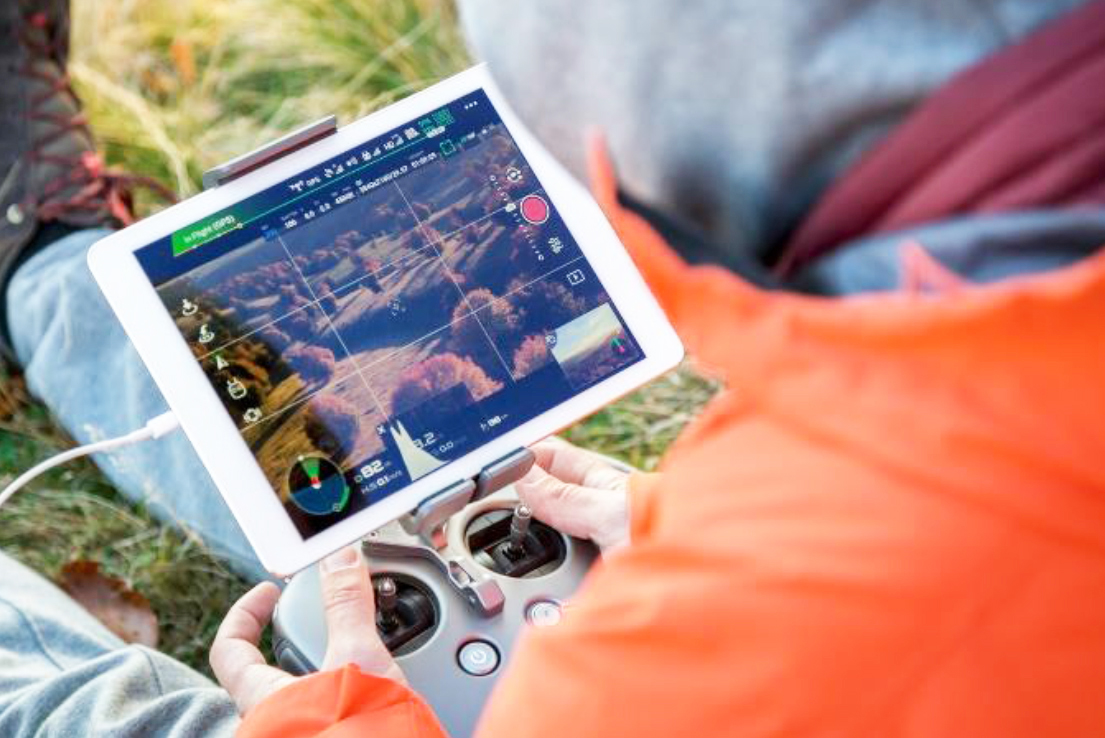
Today, the most effective and practical drone applications rely on AI for object identification, classification, image enhancement and stitching. While this falls well short of the actual potential of AI, it has significant influence in automation and scaling of a wide range of applications at a lower cost. AI allows drones to recognise objects on ground and evaluate, analyse and gather data to be sent to the ground station. High-performance onboard image processing engines powered by AI and Computer Vision Algorithms enable the drones to derive crucial information from the data gathered by various sensors. Complex neural networks continue to learn without supervision while in use, boosting detection, analysis and interpretation capabilities.
AI is also playing an important role in realizing Autonomous combat drones. Autonomous weapon systems on Drones have the ability to recognise opponents or identify prospective threats. Once a threat has been spotted and queued, the system may either trigger firing automatically or rely on a human-in-the-loop to make the choice. With AIbased SWaP-optimized supercomputers delivering ultra-high performance at low power, unmanned systems can achieve incredible levels of autonomous operational capability. They can operate for longer period through a mission, offer high reliability, and can transfer crucial real-time data to the main command centre. An important development in this domain is the use of UAVs to expand the combat power of fighter planes. Consider a fighter plane synced with multiple UAVs, expanding its reach and lethality from being a single aircraft to a tiny army of multiple units, all operating together with one mission, directed by the fighter aircraft’s pilot.
Another significant outcome of introducing AI in UAVs is networked drone swarms, wherein drones in the flock communicate, cooperate and self-organize into a cohesive swarm, flying in synchrony without colliding. For example, a swarm of drones can examine a large border frontline and detect any enemy threats. Instead of flying in a pre-programmed path and following a pre-programmed position, each drone measures its own position and velocity and shares the data with the rest of the swarm. This allows them to navigate around barriers, dodge enemy fire, and explore regions with a strong presence of enemy.
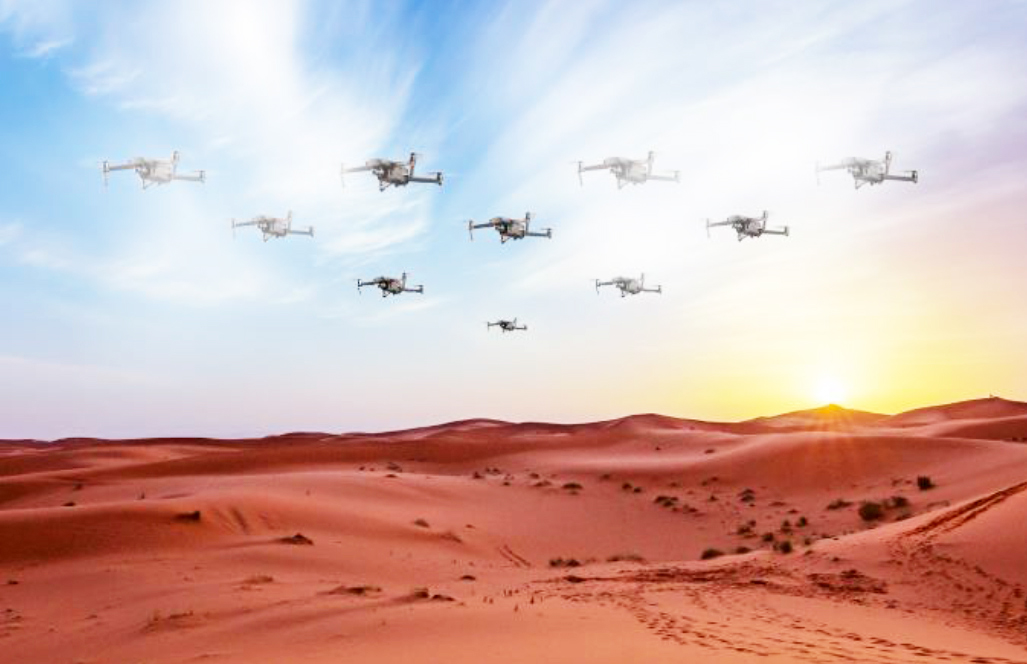
Small lethal drones are difficult to detect on radar, and they can even be programmed to hit targets without human intervention. Known as loitering munitions, these AI-enabled drones loiter around the target area for some time, searches for the target, and attacks once the target is located. Loitering munitions offer faster reaction times against concealed or hidden targets. These trained drones, of comparatively lower cost, can replace high-value platforms while going close to a target, and can also be withdrawn quickly if the mission is aborted.
The Future is Here
Militaries all over the world are already inducting latest in Defense technology solutions and new age weapons. Tactical UAVs are making a larger impact in the field of ISR, combat, and logistics delivery. They are all set to replace humans as front-line combat warriors and we will witness much higher human-machine collaboration in the future. Imminent innovations in the domain can be disruptive as UAVs gain higher efficiency and autonomy enabling them to make intelligent decisions during combat providing crucial air dominance. Armed forces worldwide are actively investing in Drone swarms, though still in their infancy phase, are considered the future of robotic warfare. Advancements in AI, computer vision and deep neural algorithms will further intensify stealth and lethal capabilities, in addition to complete autonomy of these aerial vehicles in a battlefield.
